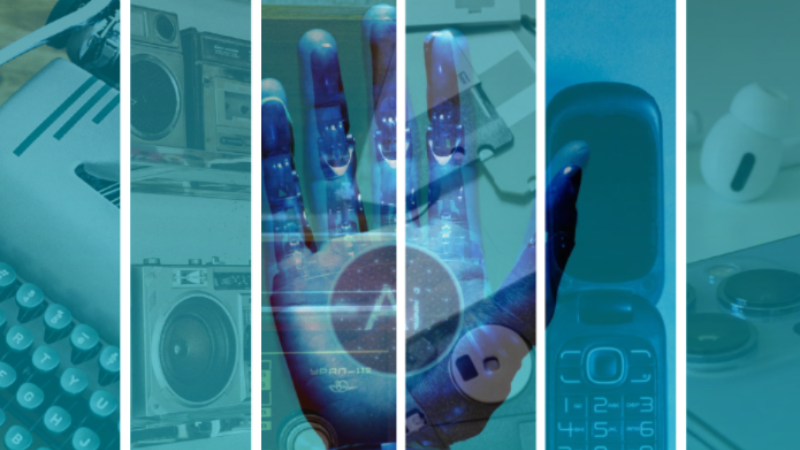Artificial Intelligence: Not New, Just Newly Acknowledged
Artificial intelligence (AI) as a formal field of study actually began in the 1950s, yet real public consciousness of AI surged only in recent years. Today, technologies like ChatGPT and other generative image models dominate headlines—but the foundational work and practical uses of AI have been quietly evolving for decades. In this blog post from Century Solutions Group, we explore AI’s deep history, everyday applications, and why the excitement now is both warranted and well-founded.
A Legacy of Innovation: AI’s Quiet Beginnings
The formal concept of AI dates back to the 1956 Dartmouth Conference, often cited as the starting point of modern AI research (FormusPro, 2023). Earlier milestones included:
- Audrey, a Bell Labs system (1952) that could recognize spoken digits (Wikipedia, n.d.-a).
- IBM’s Shoebox (1962) would recognize limited speech and later speech systems like Harpy (~1971) and Tangora (1986) using the Hidden Markov Models to process vocabulary at a typical three-year-old level reading level (Wikipedia, n.d.-a; Voice Computing, 2025).
Despite these amazing achievements, AI entered a period of underfunding and major skepticism in the 1970s and 1980s. It wasn’t until computing power and machine learning techniques matured which resulted in AI regaining momentum.
Industrial Applications: AI at Work Behind the Scenes
Well before the era of the infamous ChatGPT, AI drove highly practical systems in finance, banking, retail, and beyond:
- In the 1980s, companies like DuPont deployed expert systems that saved millions by predicting market movements (Wikipedia, n.d.-b).
- In 1993, the FinCEN AI System (FAIS) processed over 200,000 transactions weekly and helped flag suspicious activity totaling billions in value (Wikipedia, n.d.-b).
- Today, companies like Mastercard run AI tools analyzing up to 160 billion transactions per year for fraud detection, combining behavioral biometrics with continuously learning models under human governance frameworks (Business Insider, 2025).
Voice assistants such as Siri (2011), Google Assistant (2016), and Amazon Alexa (2014) brought AI into daily consumer life, yet they built on decades of prior research in speech recognition and natural language processing (Wikipedia, n.d.-c; Voice Computing, 2025).
Why Does AI Feels “New” Now?
The sudden public fascination stems from several converging developments:
- User-friendly generative models like ChatGPT and DALL·E made advanced AI accessible to everyday users.
- Conversational and intuitive interfaces minimize technical barriers.
- Broad commercial adoption across sectors turned AI from cost-center experimentation into revenue-generating innovation (Verloop, 2025).
This rapid evolution reframed AI from a background enabler to a visible engine of change.
A Balanced View: AI is Useful, Not Apocalyptic
Despite sensational media coverage predicting AI’s impending takeover, experts like Neil deGrasse Tyson and Hasan Minhaj have pointed out that many fears are exaggerated as AI’s limitations and human oversight remain central to its safe deployment (“Why AI Is Overrated”, 2025).
Indeed, AI today amplifies human capability such as for example:
- Supporting customer service
- Automating routine tasks
- Improving fraud detection
- Enhancing decision-making through predictive analytics (IBM, n.d.; CIO Coverage, n.d.)
When responsibly managed, AI is less a threat and more a strategic asset.
How Businesses Should Approach AI Today
A mature, practical deployment of AI should include:
- Responsible governance, including audits, accountability, and bias mitigation
- Human-in-the-loop systems combining AI with expert oversight
- Ethical frameworks aligned to business and regulatory standards
At Century Solutions Group, we help organizations implement AI systems that deliver real value without compromising safety or compliance.
📌 Conclusion
AI is far from a sudden invention as it’s the result of decades of research, steady application, and technological advances. Today’s buzz around generative models reflects not just novelty, but opportunity. With proper governance, training, and oversight, AI can power measurable business outcomes while remaining firmly under human control.
References
Business Insider. (2025, May 12). AI-powered fraud detection at Mastercard [News article]. Business Insider. YouTube+2YouTube+2Formus ProWikipedia+1WikipediaBusiness InsiderVerloop.ioYouTube+5YouTube+5YouTube+5PwCCIO Coverage
FormusPro. (2023). 11 times AI has been in your life far longer than you realised. FormusPro. Formus Pro
IBM. (n.d.). What is artificial intelligence (AI)? IBM. IBM
Verloop. (2025). The timeline of artificial intelligence—from the 1940s to 2025. Verloop.io. Verloop.io
Voice Computing. (2025). Voice computing history. Wikipedia. Wikipedia
Wikipedia. (n.d.-a). Virtual assistant history. Wikipedia. arxiv.org+4Wikipedia+4arxiv.org+4
Wikipedia. (n.d.-b). Applications of artificial intelligence. Wikipedia.

